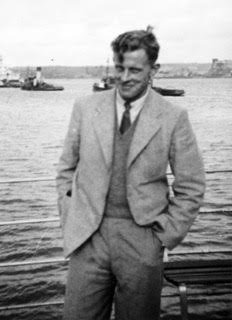SOME OF EAST BUDLEIGH'S AMERICAN CONNECTIONS: TEN PICTURES WHICH TELL A STORY
With the American city of Salem, Massachusetts, marking its 400th anniversary in 2026, we may see more visitors from the USA crossing the Atlantic to explore a particular link between Salem and East Budleigh. The village has quite a few other interesting transatlantic links.
Raleigh’s statue. The shadow tells us how he died
Born in East Budleigh where his statue stands near the church
of All Saints, Sir Walter Raleigh (c.1552-1618) never set foot in North America, but he certainly encouraged early English colonisation of the continent. And
there’s another aspect of his influence on America.
The title page of Raleigh’s History of the World, published
in 1614
Raleigh’s History of the World angered King
James I (1566-1625) who believed in the Divine Right of Kings and described the
work as ‘too saucie towards princes’. With its criticism of tyrant rulers, the
book inspired American revolutionaries like Thomas Jefferson (1743-1826), one of the USA's Founding Fathers who wrote the 1776 Declaration of Independence and served
as the country's third president from 1801 to 1809.
Image credit: www.monticello.org
Jefferson owned this portrait of Raleigh as well as a 1736
edition of Sir Walter’s History of the World.
The Raleigh Tavern in Williamsburg,
reconstructed in 1930-31 Image credit: Maggie McCain
Named after Sir Walter, and with his bust above the doorway,
the Raleigh Tavern in the city of Williamsburg, Virginia, was a centre of sedition
and a meeting-place of American patriots such as Thomas Jefferson and Governor Patrick Henry (1736-1799) in the 1770s.
The USS Raleigh named for Sir Walter
Americans fighting for freedom against British ‘tyranny’ during
the 18th century War of Independence so admired Raleigh that they
named a warship after him. The USS Raleigh, launched in 1776, features
on the state seal of New Hampshire. The patch or badge of the US Navy’s cruiser
of the same name, launched in 1922, includes Sir Walter’s arms: Gules,
five fusils conjoined in bend argent
Roger Conant remembered in East Budleigh
Less well known than Raleigh, but also born in East Budleigh,
Roger Conant (1592-1679) left England in around 1623 and founded the city of
Salem, Massachusetts. The blue plaque at the village’s Church Hall was unveiled
by two of his descendants and the local MP.
The grave of Bicton's John Upham. Image credit:
Susan Brown
This is the grave of John Upham (1597-1681) in the Old
Burying Ground of Malden, Massachusetts. Even less well known than Roger
Conant, but born in the same parish of East Budleigh and Bicton, he sailed to
America with his family on 20 March 1635 from Weymouth, Dorset. He arrived in
Boston on 6 May, and was one of the founders of the city of Malden. The so-called Great Migration between 1620 and
1640 saw roughly 80,000 people leave England for America.
Salem Chapel, on the outskirts of East Budleigh
Roger Conant founded Salem but that has nothing to do with Salem
Chapel, built for Dissenters who objected to church services at All Saints. Yet Salem Chapel has an indirect link with the
USA. Local lord of the manor Richard Duke (1652-1733) contributed stone for the
building in 1719. He is likely to have been encouraged by his friend the
philosopher John Locke (1632-1704) to believe that people should be free to
worship as they liked.
Portrait of John Locke by Sir Godfrey
Kneller (1646-1723)
And John Locke, with his belief in government by consent of
the people, is regarded as having inspired parts of the 1776 American
Declaration of Independence. No one, he
wrote in his Second Treatise of Government (1689), can be ‘subjected to
the Political Power of another, without his own Consent’.
The Preedy window in All Saints Church, based on the New Testament story of the storm on the Sea of Galilee
In the following century, this fine stained glass window in
All Saints Church East Budleigh was created to commemorate Admiral George
William Preedy CB (1817-1894) who is buried in the churchyard. Preedy is
celebrated for his command of HMS Agamemnon, the British warship which, together
with the USS Niagara, laid the first successful transatlantic telegraph
cable in 1858.



.jpg)




.jpg)




Comments
Post a Comment